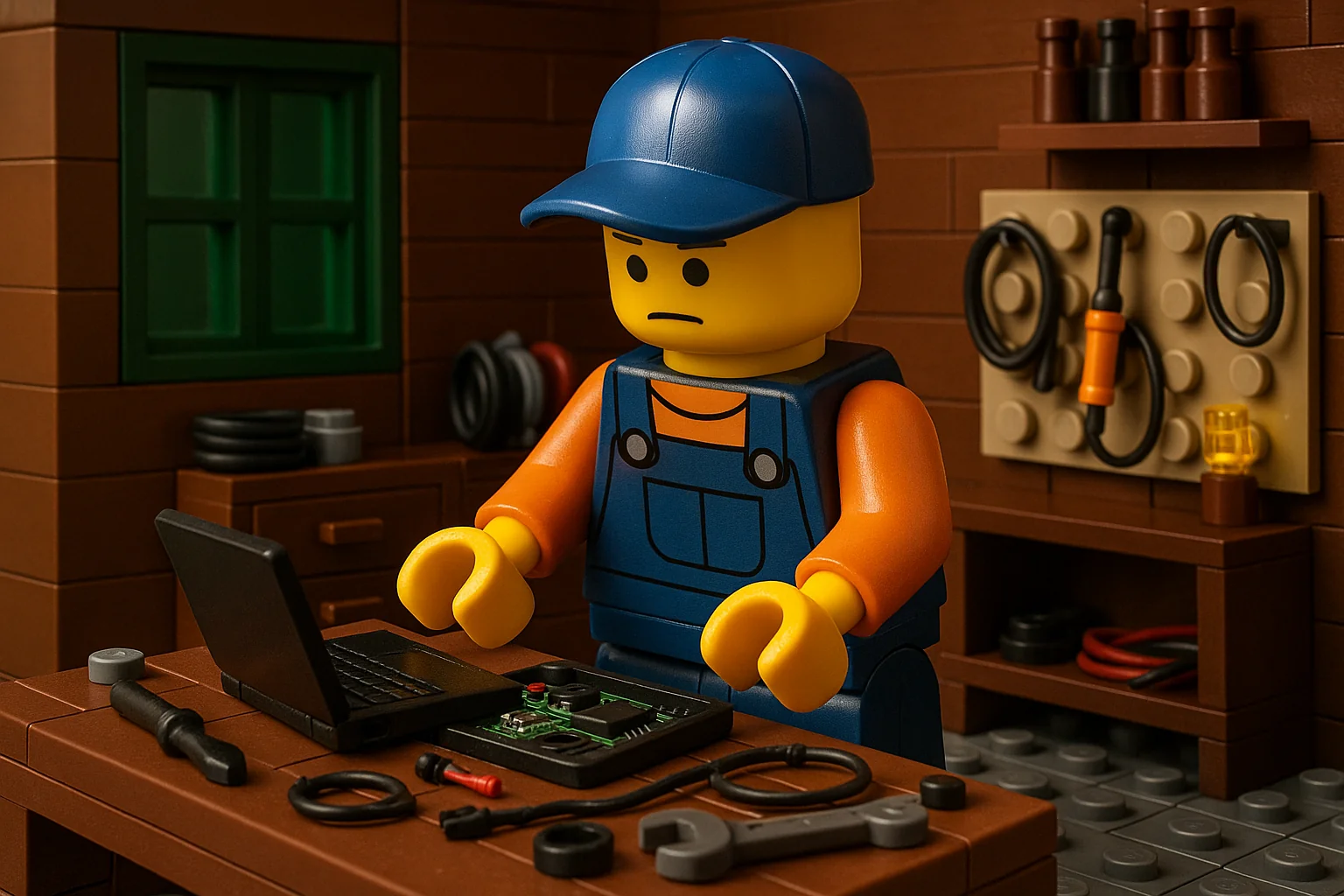Why does my laptop overheat and shut down?

Table of Contents
Possibilities to consider:
- Vents and heatsink fins clogged with dust; needs a careful clean-out.
- Dry thermal paste or warped heat pipe reducing heat transfer.
- Fan failing or fan curve stuck; BIOS/EC or replacement might be needed.
- Background load (malware, runaway updater) keeping CPU/GPU pinned.
- Using on soft surfaces blocking intake.
Need help? Check here: /services/repairs/
What it might be (likely causes)#
Airflow blockage
Lint cakes inside the fan shroud and radiator fins, choking airflow. Even a thin felt layer can push temps to throttle or shutdown.Aging thermal interface
Thermal paste dries out; pads compress; heat pipes can partially fail, lowering heat transfer from die to fins. Background reading: Thermal paste (Wikipedia), Heat pipeFan or control curve issues
Fans wear out, seize intermittently, or the embedded controller (EC) sticks to a bad curve after sleep/hibernate. Firmware/BIOS updates sometimes fix ramp behavior.Constant background load
Updaters, runaway browser tabs, miners, or malware keep CPU/GPU lit up even at idle. That heat has to go somewhere. For “older laptop acting tired” context: /posts/speed-up-old-laptop/ and /posts/top-problems-10-year-old-pcs/User environment
Plush blankets and couch cushions smother intakes; hot rooms or sunlit desks give you worse headroom before throttling.
Things to check (safe, quick wins)#
Observe temps & load
Watch CPU/GPU temperature and % load at idle and under a quick burst (opening a few apps). If temps spike at idle, suspect dust or paste. If load sits >20% doing nothing, hunt the process.- Windows: Task Manager → Processes and Performance.
- Linux:
top/htopandsensors.
Vent sanity + posture
Inspect side/back vents with a flashlight. Elevate the rear on a book or use a passive stand. Avoid cloth surfaces; use a table or lap desk.Dust ejection (gentle)
With the laptop off, briefly blow across vents (not hard into them) to dislodge surface lint. If a visible lint mat pops into view, a proper open-up clean is due.Power plan / fan curve
- Windows: Power Options → Balanced; disable “silent” vendor modes while testing.
- Vendor utilities often let you set a more aggressive fan curve. If the fan never ramps, update BIOS/EC first.
Background offenders
Sort Task Manager by CPU and Disk. Kill stuck updaters or browsers. If CPU drops and temps recover, you found a software cause. If not, keep looking at cooling.Thermal throttling check
Short, controlled load (e.g., a quick compile or video export) should rise, plateau, then stabilize. Instant spikes to 90–100 °C followed by rapid downclocking point to poor contact or clogged fins. General boot/firmware sanity that often helps: /posts/the-art-of-making-things-boot/
When to pause and get hands-on help#
- Auto-shutdowns under light use or temps pegged near manufacturer Tjunction for more than a few seconds.
- Fan rattle, grinding, or no spin on power-up.
- Thermal paste refresh is indicated if the machine is >3–5 years old and runs hot even after dusting. That’s a “open the chassis” job; paste choice and pad thickness matter, especially around VRM/memory.
Before any internal work, back up important files: /posts/simple-data-backups-without-cloud/ and skim the prep checklist: /posts/prepare-for-computer-repair/
For a sense of how symptoms cluster on aging hardware, see: /posts/top-problems-10-year-old-pcs/
Insight#
Heat is just energy that didn’t leave on time. Laptops survive by moving watts from tiny chips to thin fins, and the weakest link—paste, pipe, fan, or airflow—sets the ceiling. Software can fake a problem (constant load) or mask it (underclocking), but physics always wins. Fix the path, and the CPU stops thrashing; fix the workload, and the fans stop screaming. A stable machine is one where cooling capacity comfortably exceeds typical load, not just on day one, but years later as dust and entropy creep in.
Need a careful clean-out, fan replacement, or repaste in Kirksville?
See /services/repairs/.